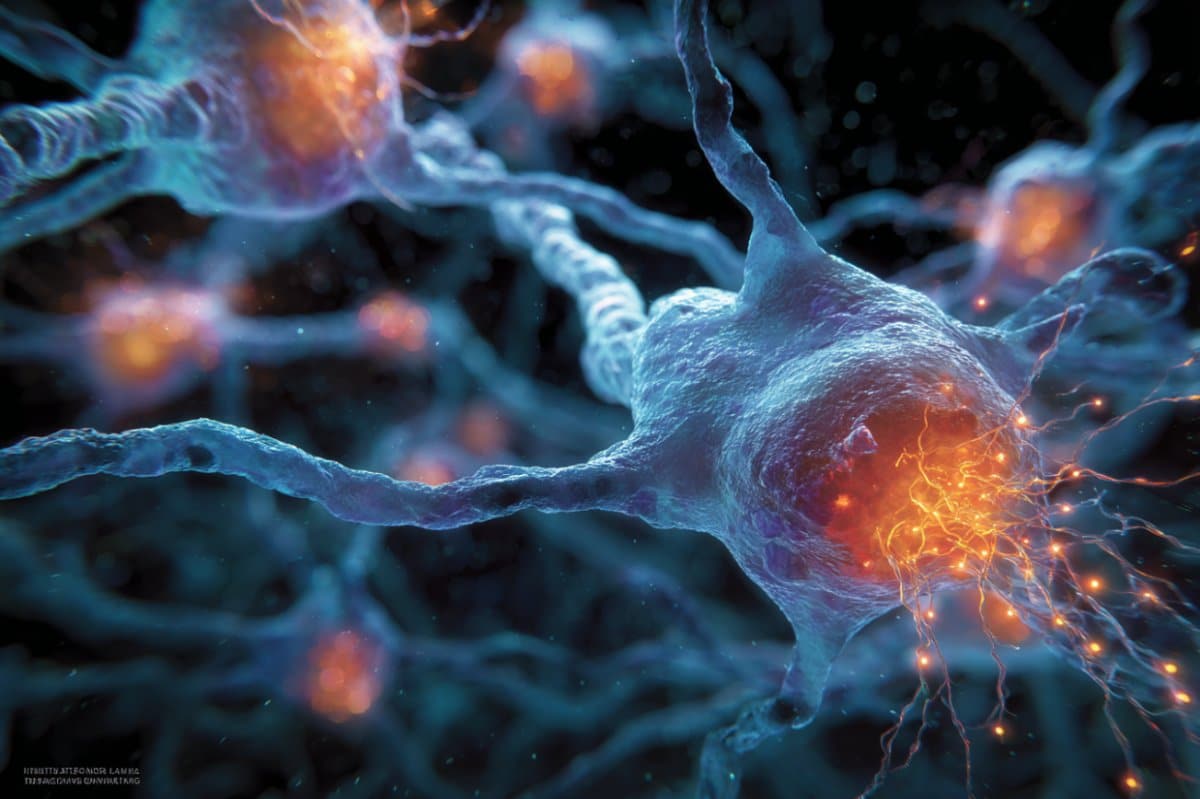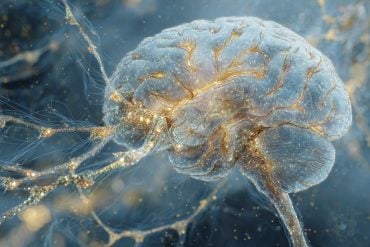Summary: A new study has identified a mutation in the TREM2 gene that disrupts the brain’s ability to clear toxic amyloid plaques, increasing Alzheimer’s disease risk. The mutation, called T96K, keeps the TREM2 gene in an overactive state that paradoxically weakens microglial “cleanup” activity, especially in females.
Using genetically modified mice, researchers discovered that these overactive microglia failed to respond effectively to amyloid buildup, leaving the brain more vulnerable to neurodegeneration. The findings reveal that both excessive and deficient TREM2 activity can harm brain health, offering crucial insights for designing safer Alzheimer’s therapies.
Key Facts:
- New Mutation Identified: The TREM2-T96K gain-of-function mutation impairs microglial ability to remove amyloid plaques.
- Sex-Specific Effect: The mutation reduced microglial protection and plaque clearance in female Alzheimer’s model mice.
- Therapeutic Implications: Enhancing TREM2 activity may not always be beneficial and could worsen Alzheimer’s pathology.
Source: Mass General
Dominika Pilat, PhD, and Ana Griciuc, PhD, of the Department of Neurology at Massachusetts General Hospital are the lead and senior authors of a paper published in Neuron, “The Gain-of-Function TREM2-T96K Mutation Increases Risk for Alzheimer’s Disease by Impairing Microglial Function.”
Q: How would you summarize your study for a lay audience?
Our team wanted to understand how immune cells of the brain, called microglia, contribute to Alzheimer’s disease (AD) pathology. It’s known that subtle changes, or mutations, in genes expressed in microglia are associated with an increased risk for developing late-onset AD.

Our study focused on one such mutation in the microglial gene TREM2, an essential switch that activates microglia to clean up toxic amyloid plaques (abnormal protein deposits) that build up between nerve cells in the brain.
This mutation, called T96K, is a “gain-of-function” mutation in TREM2, meaning it increases TREM2 activation and allows the gene to remain super active.
Through our research, we explored how this mutation impacts microglial function to increase risk for AD. We generated a mutant mouse model carrying the mutation, which was bred with a mouse model of AD to have brain changes consistent with AD.
We found that in female AD mice exclusively, the mutation strongly reduced the capability of microglia to respond to toxic amyloid plaques, making these cells less protective against brain aging.
Q: What question were you investigating?
We asked whether the T96K mutation in the TREM2 gene helps or hurts the pathogenesis of Alzheimer’s disease. This led us to investigate how this mutation affects microglial function in mouse models of AD.
Q: What methods or approach did you use?
To analyze the role of this mutation in Alzheimer’s disease, we combined studies of human genes, a novel TREM2-T96K mouse model, and lab tests on microglial cells. To examine the brain tissue, we used an optical imaging technique called confocal microscopy and protein tracking tools, including ELISA.
Finally, we used single-cell RNA sequencing of microglia isolated from the mouse brain and bioinformatic analysis to map out exactly how the T96K mutation changes the microglia activity over time.
Q: What did you find?
Our study is the first to show that a gain-of-function mutation in TREM2 (not just a loss-of-function mutation) is associated with Alzheimer’s disease risk, and that it impairs the uptake of toxic amyloid beta (Aβ). Additionally, the specific T96K mutation we focused on decreased the total area covered by the microglia “cleanup crews” and suppressed their disease-fighting response, specifically in female AD mice.
Q: What are the implications?
Our study on TREM2 gain-of-function mutations shifts our understanding of TREM2 function – not only from a genetic perspective, but also from a therapeutics perspective.These findings should help guide novel therapeutic approaches for the prevention and treatment of Alzheimer’s disease, based on targeting TREM2.
Notably, our results also underscore the need for more studies addressing whether novel AD therapies aimed at enhancing TREM2 activity could have adverse, as opposed to beneficial, effects on AD pathogenesis.
Q: What are the next steps?
Future work will focus on investigating the role of TREM2 gain-of-function mutations in modulating immune functions, microglial lipid metabolism and cellular aging in human microglia-like cells and mouse models of Alzheimer’s disease.
Authorship: In addition to Pilat and Griciuc, Mass General Brigham authors include Hoang Le, Dmitry Prokopenko, Chih-Chung Jerry Lin, William A. Eimer, Luisa Quinti, Evan P. Gavrilles, Sheyla N. Garcia, Sara N. Heitman, Danielle McGinty, Murat Cetinbas, Ruslan I. Sadreyev, and Rudolph E. Tanzi.
Paper cited: Pilat, D.J., et al. “The Gain-of-Function TREM2-T96K Mutation Increases Risk for Alzheimer’s Disease by Impairing Microglial Function.” Neuron. DOI: 10.1016/j.neuron.2025.09.032
Funding: This work was supported by grants from the NIA/NIH (R01AG073292 to A.G.), Cure Alzheimer’s Fund (A.G. and R.E.T.), Coins for Alzheimer’s Research Trust Fund (A.G.), Freedom Together Foundation (R.E.T.), and BrightFocus Foundation fellowship A2022009F (H.L.). R.S. is supported by NIDDK/NIH grant P30DK040561.
Disclosures: The authors declare no competing financial or commercial interests. This study was supported by federal and nonprofit funding sources.
Key Questions Answered:
A: The T96K mutation keeps the TREM2 gene overactive, leading microglia to become less effective at clearing amyloid plaques that drive Alzheimer’s disease.
A: It challenges the long-held assumption that increasing TREM2 activity always helps protect against Alzheimer’s, revealing that too much activation can be just as damaging.
A: Scientists plan to explore how TREM2 gain-of-function mutations influence microglial metabolism, immune signaling, and aging, with the goal of refining treatment strategies.
About this genetics and Alzheimer’s disease research news
Author: Brandon Chase
Source: Mass General
Contact: Brandon Chase – Mass General
Image: The image is credited to Neuroscience News
Original Research: The findings will appear in Neuron






